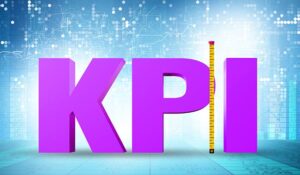Focus on the right contact centre KPIs and forget about the metrics that won’t deliver insights on your business.
The purpose of key performance indicators (KPIs) is to help you to measure, manage, and improve performance.
In the contact centre setting, KPIs are used to evaluate key performance areas. In addition to being used as a measurement tool, KPIs also help management determine where to invest and improve on specific areas.
However, a common error is to track the wrong KPIs: those that don’t give you insights on the business or that are not aligned with the company’s strategy.
Keep reading and discover which KPIs you should be tracking and which you should disregard.
The Importance of Choosing the Right Contact Centre KPIs
It’s tempting to select metrics that are easy to track, such as the number of missed calls or calls per hour.
But what do these metrics tell you? From the number of calls, how can you say if the customer service is effective, if agents are performing at their best, or if quality standards are met? More than that, how does it reveal the business value of your contact centre?
Before deciding which KPIs are relevant to your business, you need a solid, strategy-aligned objective.
Forget About These 3 Contact Centre KPIs
It is impossible to track and analyze all metrics. If you spend time tracking the wrong KPIs, you won’t have time for the ones that matter.
Here are 3 metrics that you should stop looking at:
Number of Missed Calls
A missed call will compromise the brand’s reputation. However, you shouldn’t be missing any calls at all. Even during seasonal peaks, you should be able to provide the customers with alternative self-service options to help reduce the volume of calls.
For those customers who can’t (or won’t) use self-service channels, you need a solid interactive voice response (IVR) system, combined with a skill-based routing flow, to increase your contact centre efficiency.
Calls Per Hour
Measuring agents’ performance with this kind of metric is flawed for several reasons. First, calls per hour say nothing about the quality of service: if the agents were capable of helping customers, how many times customers have to call to solve their problems, if they hang up satisfied with customer service, and so on.
Moreover, this metric lacks a comprehensive view of agents’ experience and engagement and relies on the premise that agents’ productivity depends on the number of calls they handle.
Call Duration
The time spent speaking to customers is variable and can be affected by several factors. Encouraging agents to reduce the time spent interacting with customers won’t help your contact centre performance.
Instead, it may lead to service inefficiency and a need for customers to call again, hurting other important KPIs.
Track These 3 Contact Centre KPIs Instead
These are 3 KPIs critical to your business, and that will give you insightful information:
Percentage of Calls Blocked
In an inbound contact centre, a high ratio of blocked calls over a short period of time indicates a one-off event (such as seasonal peaks, special promotions, service outages, etc.).
On the other hand, a high percentage of calls blocked over a long period of time might suggest one of two things: your contact centre doesn’t have an effective call deflection strategy, or you’re underestimating call volume and forecasting needs for your contact centre.
Whatever the cause is, tracking and measuring the percentage of blocked calls can help you pinpoint the issue and solve it.
Average Handle Time
This metric includes the time spent in the call and the time spent on service-related tasks. If your contact centre has a high AHT, it may negatively impact a number of other critical KPIs such as customer satisfaction (CSAT), operational efficiency, and agent productivity.
Average Hold Time
There are several reasons to put a caller on hold—the agent might need help from the supervisor, to collect further information, or because the agent is new on the job. Putting customers on hold might be detrimental to the customer experience, so it’s crucial to track this KPI.
This blog post has been re-published by kind permission of Talkdesk – View the Original Article
For more information about Talkdesk - visit the Talkdesk Website
Call Centre Helper is not responsible for the content of these guest blog posts. The opinions expressed in this article are those of the author, and do not necessarily reflect those of Call Centre Helper.
Author: Talkdesk
Published On: 28th Feb 2022 - Last modified: 1st Mar 2022
Read more about - Guest Blogs, Talkdesk






 Talkdesk is a global customer experience leader for customer-obsessed companies. Our contact center solution provides a better way for businesses and customers to engage with one another.
Talkdesk is a global customer experience leader for customer-obsessed companies. Our contact center solution provides a better way for businesses and customers to engage with one another. 












